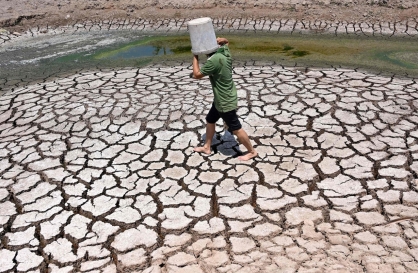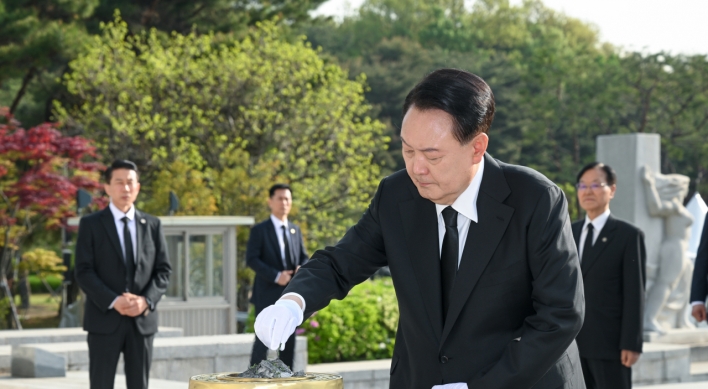Hyundai and Kia overseas sales rise as Japanese rivals suffer from worst disaster
The series of disasters that struck Japan in March could bring significant changes to the world’s automotive industry, including its direction for eco-friendly vehicles.
In a recent report, the U.S.-based market research firm Frost and Sullivan projected that the earthquake could not only open opportunities for carmakers with low reliance on Japanese parts makers, but also shift the focus of carmakers’ eco-friendly vehicle projects away from electric vehicles.
The report projected that “proven technologies” such as clean diesel and natural gas powered trains will gain steam while electric vehicle plans, which rely on nuclear power, will suffer setbacks.
In the short term, Frost and Sullivan projected that the difficulties experienced by Japanese carmakers and those that rely heavily on Japanese parts will lead to gains for those with little reliance on Japan’s auto parts makers including Hyundai Motor Co. and Ford Motor Co.
Japan’s automotive industry is recovering from the March 11 earthquake, but the rate of recovery remains slow.
The world’s largest carmaker Toyota Motor Corp. plans to operate all its facilities in Japan at half the pre-earthquake levels from May 10, while Nissan Motor Co. only managed to bring all of its facilities back on line on Monday.
Their U.S. outputs are also suffering, as Japanese carmakers and some U.S. firms lowered production at overseas facilities to conserve parts.
With Japanese carmakers slowing production, Hyundai Motor Group’s two carmakers appear to be already making headway in overseas markets.
According to the carmakers, Hyundai and Kia Motors Corp.’s combined March sales increased 37 percent from a year ago in the U.S. market. In comparison, the overall U.S. market expanded 17 percent over the same period.
The series of disasters that struck Japan in March could bring significant changes to the world’s automotive industry, including its direction for eco-friendly vehicles.
In a recent report, the U.S.-based market research firm Frost and Sullivan projected that the earthquake could not only open opportunities for carmakers with low reliance on Japanese parts makers, but also shift the focus of carmakers’ eco-friendly vehicle projects away from electric vehicles.
The report projected that “proven technologies” such as clean diesel and natural gas powered trains will gain steam while electric vehicle plans, which rely on nuclear power, will suffer setbacks.
In the short term, Frost and Sullivan projected that the difficulties experienced by Japanese carmakers and those that rely heavily on Japanese parts will lead to gains for those with little reliance on Japan’s auto parts makers including Hyundai Motor Co. and Ford Motor Co.
Japan’s automotive industry is recovering from the March 11 earthquake, but the rate of recovery remains slow.
The world’s largest carmaker Toyota Motor Corp. plans to operate all its facilities in Japan at half the pre-earthquake levels from May 10, while Nissan Motor Co. only managed to bring all of its facilities back on line on Monday.
Their U.S. outputs are also suffering, as Japanese carmakers and some U.S. firms lowered production at overseas facilities to conserve parts.
With Japanese carmakers slowing production, Hyundai Motor Group’s two carmakers appear to be already making headway in overseas markets.
According to the carmakers, Hyundai and Kia Motors Corp.’s combined March sales increased 37 percent from a year ago in the U.S. market. In comparison, the overall U.S. market expanded 17 percent over the same period.

The Korean auto giant is making most of the gap left by rivals’ supply difficulties, with Hyundai’s U.S. plant planning to roll out 330,000 units, 10 percent more than its capacity of 300,000 units, while Kia’s plant in Georgia plans to continue overtime and Saturday production. In addition, the companies’ hybrid electric car plans could also benefit from the troubles at Japanese carmakers, which dominate the market for such vehicles, as Hyundai readies to launch its first gasoline-electric hybrid car on the U.S. market next month.
“The companies’ U.S. plants are increasing output in order to meet the rising demand,” a Hyundai Motor Group official said.
“Of course there are some gains made from competitors’ difficulties, but the output increase was not decided as a move specifically designed to benefit from their problems.”
The two firms’ combined sales in Europe also surpassed that of Toyota and Lexus brands for the second month in March, becoming that market’s largest Asian carmaker.
According to the European Automobile Manufacturers’ Association, Hyundai and Kia sold 74,341 vehicles in Europe last month, while 69,550 units of Toyota and Lexus vehicles were sold.
With Japanese parts makers holding significant share of the global market, non-Japanese carmakers are also feeling the impact of the March disasters.
As such, some in the industry project that the world’s automobile output could be cut by as much as 5 million units this year, which in turn could lead to major changes in the rankings of carmakers by sales volume.
According to Korea Automotive Research Institute, some of the world’s largest carmakers are feeling the pinch to the extent that their rankings by annual sales could change.
KARI also projects that carmakers may change their parts supply systems to better prepare for similar developments.
“Methods for reducing risk include increasing parts stocks, diversifying parts production and supply networks, establishing ‘complete local’ supply network and setting up flexible production systems,” the KARI report said. However, such means will lead to higher costs compared to the systems in place now, calling for a balance between risk management and profitability.
According to KARI, carmakers parts supply systems have evolved to minimizes the volume of parts stored, with some going as far as to adopt a “just in sequence” system where parts are produced and supplied as needed.
While such methods maximize efficiency under normal conditions, they are vulnerable to natural disasters, as any production difficulties suffered by parts makers have an immediate impact on that of carmakers.
In addition, carmakers’ efforts to achieve economies of scale by concentrating production of various parts in specific regions have also exposed them to risk from unexpected production difficulties, the KARI report said.
By Choi He-suk (cheesuk@heraldcorp.com)








![[KH Explains] Hyundai's full hybrid edge to pay off amid slow transition to pure EVs](http://res.heraldm.com/phpwas/restmb_idxmake.php?idx=644&simg=/content/image/2024/04/18/20240418050645_0.jpg&u=20240419100350)






![[From the Scene] Monks, Buddhists hail return of remains of Buddhas](http://res.heraldm.com/phpwas/restmb_idxmake.php?idx=652&simg=/content/image/2024/04/19/20240419050617_0.jpg&u=20240419175937)

![[KH Explains] Hyundai's full hybrid edge to pay off amid slow transition to pure EVs](http://res.heraldm.com/phpwas/restmb_idxmake.php?idx=652&simg=/content/image/2024/04/18/20240418050645_0.jpg&u=20240419100350)

![[Today’s K-pop] Illit drops debut single remix](http://res.heraldm.com/phpwas/restmb_idxmake.php?idx=642&simg=/content/image/2024/04/19/20240419050612_0.jpg&u=)